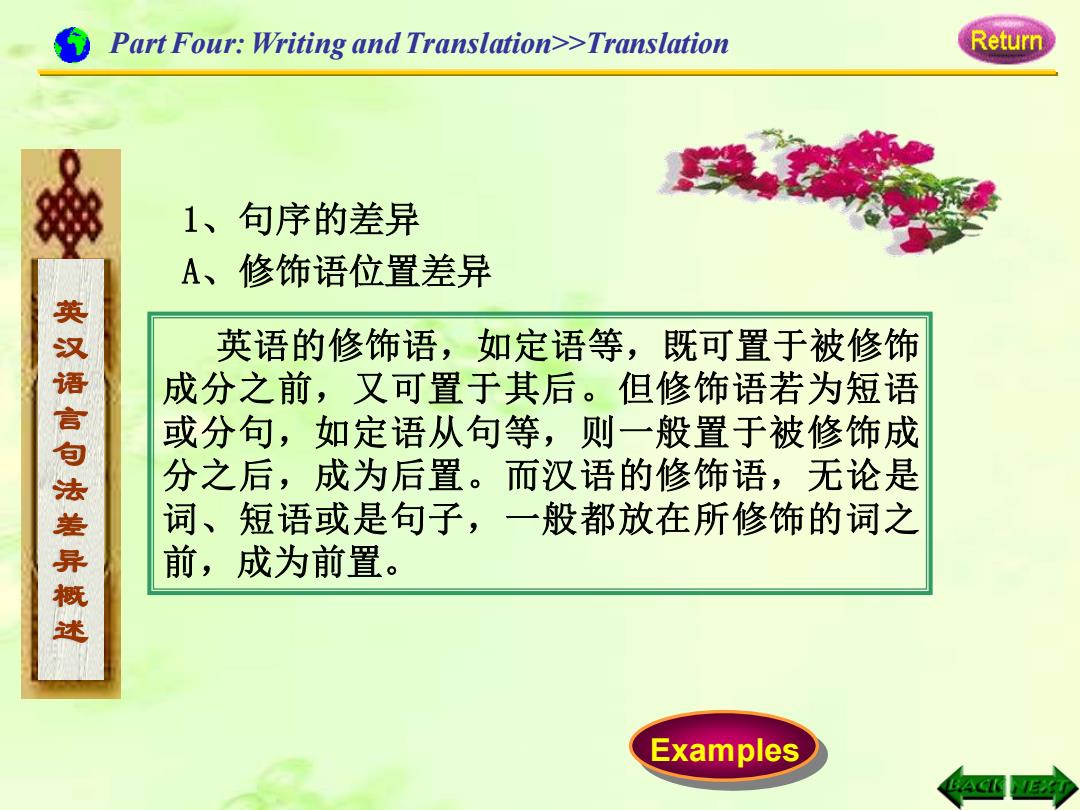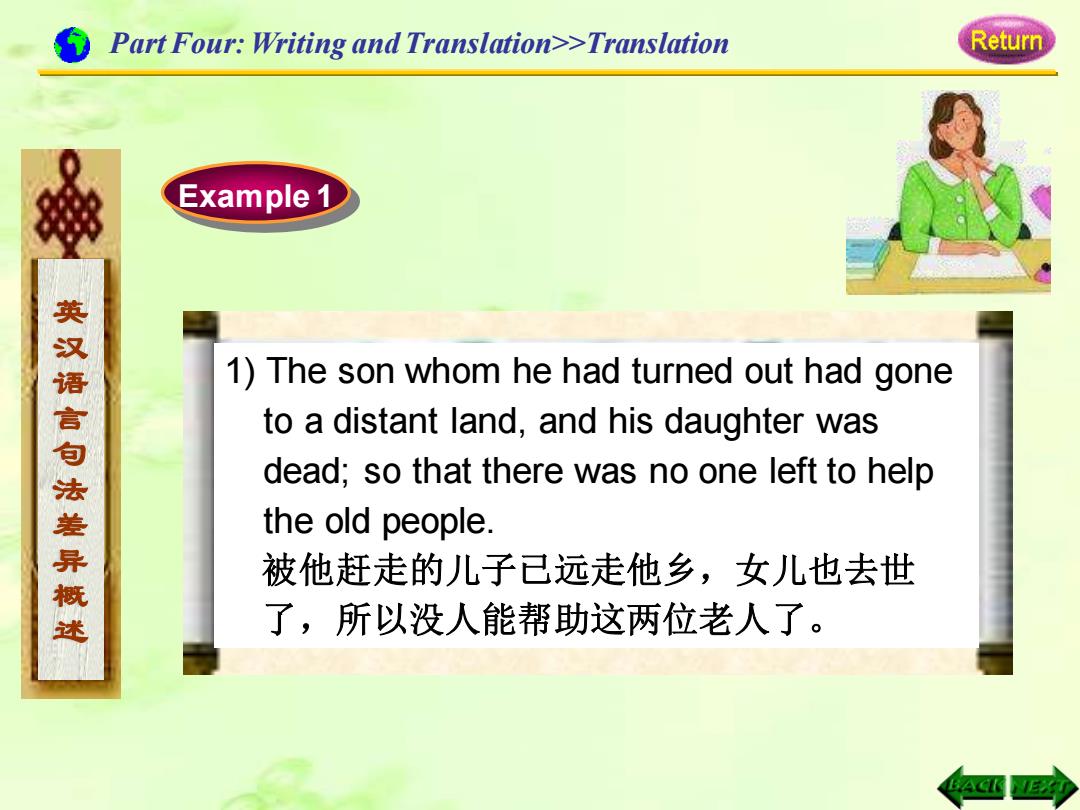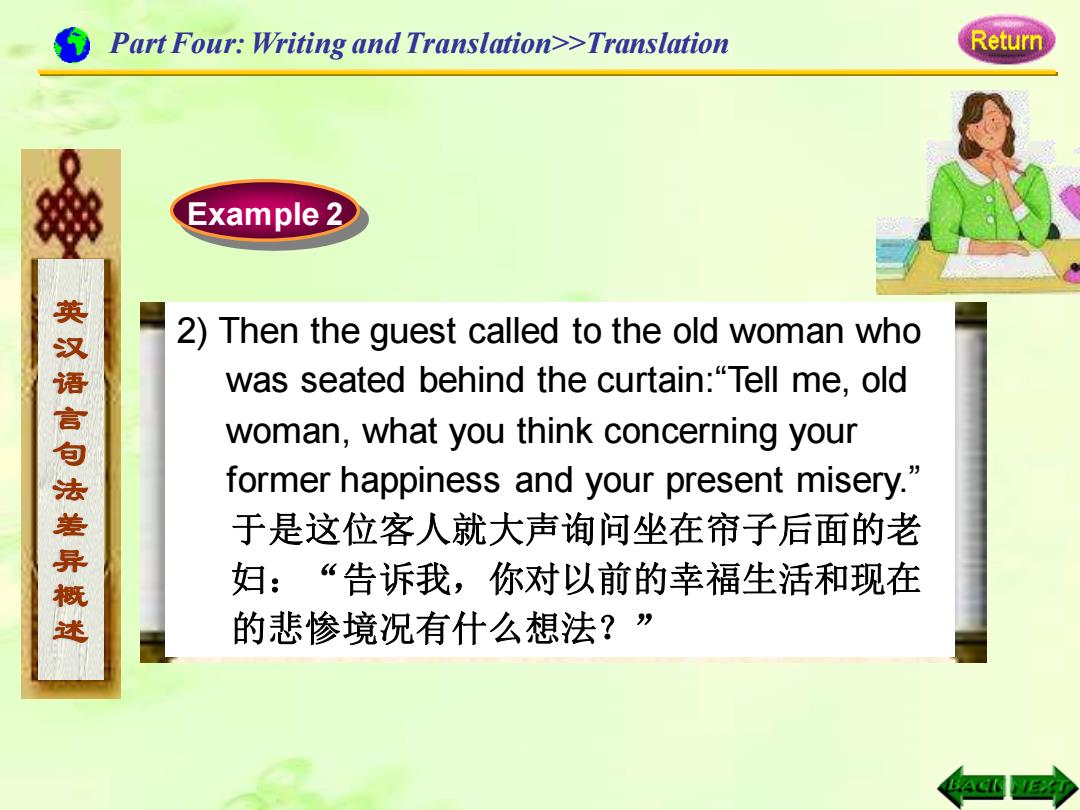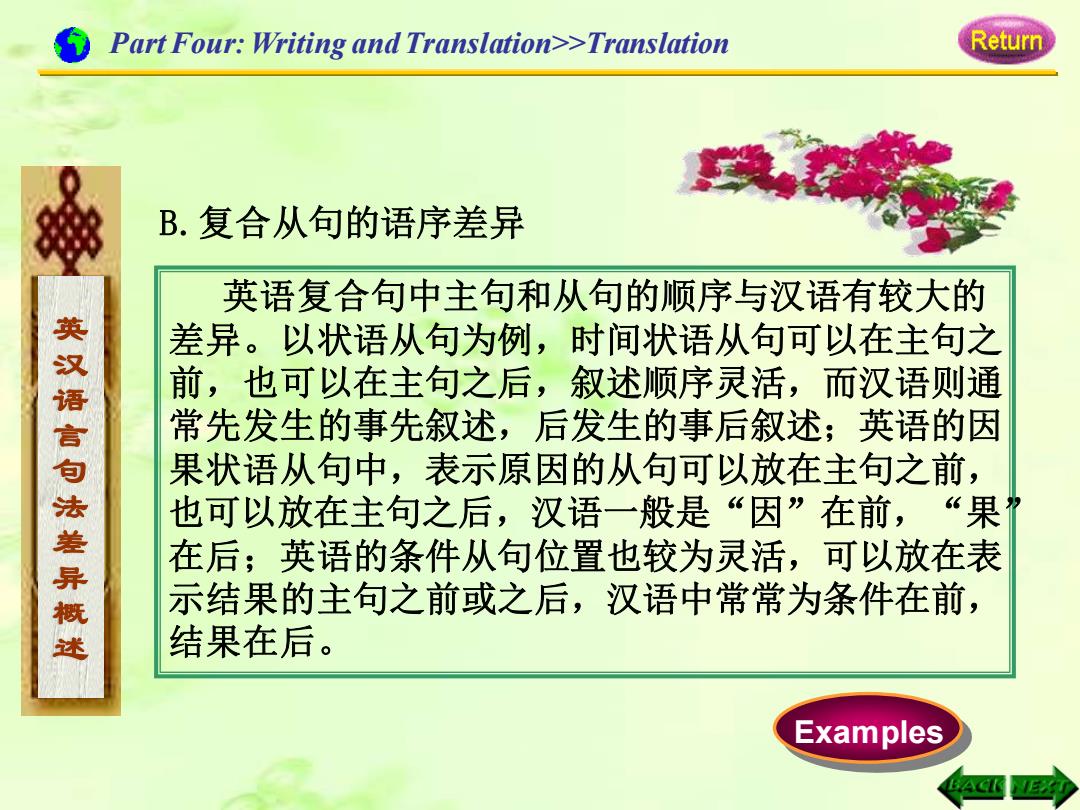
Part Four:Writing and Translation>>Translation Return Translation Knowing About Translation 英汉语言包法差异概述 英汉句子的基本结构都是“主语+谓 语十宾语”,但是在形式结构上有较多 的差异。这种差异主要表现在句序和句 子结构等方面
Translation 英 汉 语 言 句 法 差 异 概 述 英汉句子的基本结构都是“主语+谓 语+宾语”,但是在形式结构上有较多 的差异。这种差异主要表现在句序和句 子结构等方面。 Part Four: Writing and Translation>>Translation Knowing About Translation

Part Four:Writing and Translation>>Translation Return 1、句序的差异 A、修饰语位置差异 英语的修饰语,如定语等,既可置于被修饰 英汉语言句法差异概述 成分之前,又可置于其后。但修饰语若为短语 或分句,如定语从句等,则一般置于被修饰成 分之后,成为后置。而汉语的修饰语,无论是 词、短语或是句子,一般都放在所修饰的词之 前,成为前置。 Examples
英 汉 语 言 句 法 差 异 概 述 1、句序的差异 A、修饰语位置差异 Examples 英语的修饰语,如定语等,既可置于被修饰 成分之前,又可置于其后。但修饰语若为短语 或分句,如定语从句等,则一般置于被修饰成 分之后,成为后置。而汉语的修饰语,无论是 词、短语或是句子,一般都放在所修饰的词之 前,成为前置。 Part Four: Writing and Translation>>Translation

Part Four:Writing and Translation>>Translation Return Example 1 英汉语言句法差异概述 1)The son whom he had turned out had gone to a distant land,and his daughter was dead;so that there was no one left to help the old people. 被他赶走的儿子已远走他乡,女儿也去世 了,所以没人能帮助这两位老人了
英 汉 语 言 句 法 差 异 概 述 1) The son whom he had turned out had gone to a distant land, and his daughter was dead; so that there was no one left to help the old people. 被他赶走的儿子已远走他乡,女儿也去世 了,所以没人能帮助这两位老人了。 Example 1 Part Four: Writing and Translation>>Translation

Part Four:Writing and Translation>>Translation Return Example 2 2)Then the guest called to the old woman who 英汉语言句法差异概述 was seated behind the curtain:"Tell me,old woman,what you think concerning your former happiness and your present misery." 于是这位客人就大声询问坐在帘子后面的老 妇:“告诉我,你对以前的幸福生活和现在 的悲惨境况有什么想法?
英 汉 语 言 句 法 差 异 概 述 2) Then the guest called to the old woman who was seated behind the curtain:“Tell me, old woman, what you think concerning your former happiness and your present misery.” 于是这位客人就大声询问坐在帘子后面的老 妇:“告诉我,你对以前的幸福生活和现在 的悲惨境况有什么想法?” Example 2 Part Four: Writing and Translation>>Translation

Part Four:Writing and Translation>>Translation Return B.复合从句的语序差异 英语复合句中主句和从句的顺序与汉语有较大的 差异。以状语从句为例,时间状语从句可以在主句之 英汉语言句法差异概述 前,也可以在主句之后,叙述顺序灵活,而汉语则通 常先发生的事先叙述,后发生的事后叙述;英语的因 果状语从句中,表示原因的从句可以放在主句之前, 也可以放在主句之后,汉语一般是“因”在前,“果 在后;英语的条件从句位置也较为灵活,可以放在表 示结果的主句之前或之后,汉语中常常为条件在前, 结果在后。 Examples
英 汉 语 言 句 法 差 异 概 述 B.复合从句的语序差异 Examples 英语复合句中主句和从句的顺序与汉语有较大的 差异。以状语从句为例,时间状语从句可以在主句之 前,也可以在主句之后,叙述顺序灵活,而汉语则通 常先发生的事先叙述,后发生的事后叙述;英语的因 果状语从句中,表示原因的从句可以放在主句之前, 也可以放在主句之后,汉语一般是“因”在前,“果” 在后;英语的条件从句位置也较为灵活,可以放在表 示结果的主句之前或之后,汉语中常常为条件在前, 结果在后。 Part Four: Writing and Translation>>Translation